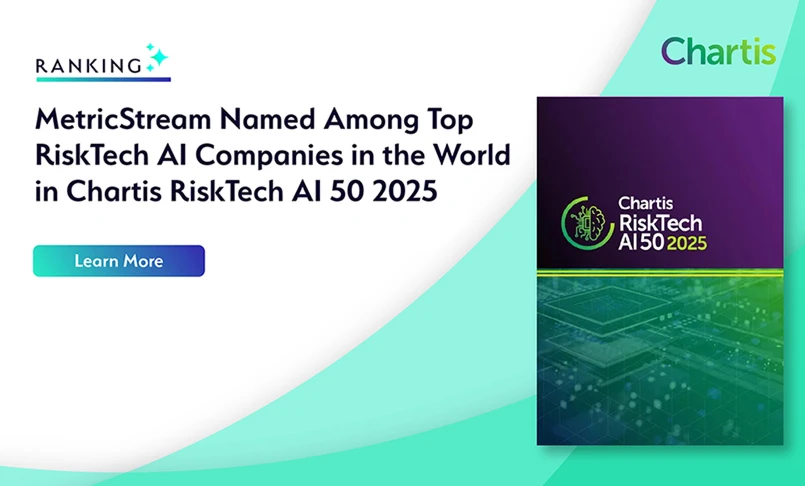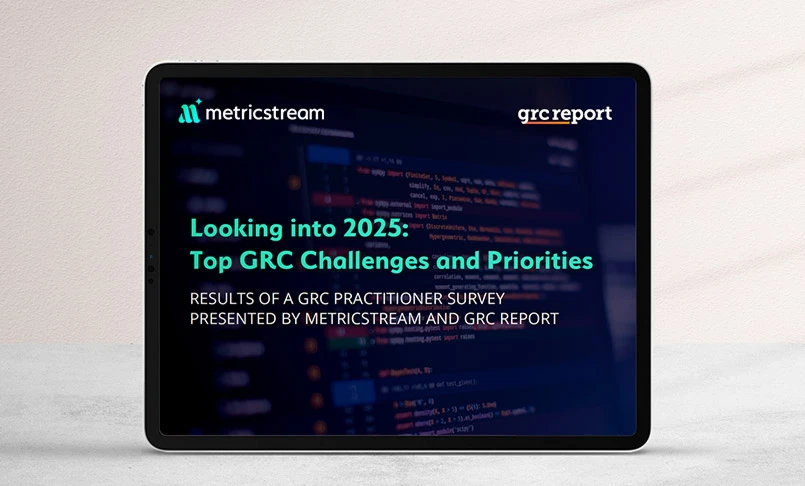Unlock the Potential of Knowledge Graphs in GRC
- GRC
- 20 September 23

Introduction
In today's dynamic business landscape, the effective management of Governance, Risk, and Compliance (GRC) has never been more critical. GRC challenges have increased as economic, geopolitical, social, healthcare, cybersecurity, and other systemic and internal risks escalate. Results from a joint survey on GRC readiness from global GRC think tank OCEG and MetricStream found that 67% of respondents highlighted the urgent need for integrated processes and technologies to improve their GRC performance.
To this end, knowledge graphs emerge as a sophisticated solution, shedding light on the intricate relationships between a multitude of entities. These structured representations of information span people, places, objects, events, and abstract concepts, offering a holistic view of the interconnected web of knowledge within an organization. So, how can knowledge graphs reshape the GRC landscape? Let's delve into the transformative power they hold.
Why Use Knowledge Graphs in GRC?
Knowledge graphs serve as a potent tool to fortify risk management practices in GRC, facilitating the identification, assessment, communication, management, and automation of risks, empowering organizations to build a robust GRC program through the following.
Identifying and Assessing Risks:
Knowledge graphs empower organizations to pinpoint and assess risks more effectively. Imagine a scenario where a knowledge graph is used to dissect potential risks associated with a specific supplier. By examining the supplier's web of connections, including customers, competitors, and regulatory bodies, organizations can identify nuanced risks such as supply chain disruptions, compliance issues, or even reputational concerns.
Transparent Risk Communication:
Effective risk communication is pivotal in decision-making. Knowledge graphs offer a visual storytelling platform. They enable organizations to convey complex risk profiles to stakeholders in a lucid and succinct manner. Visual representations of these graphs elucidate the connections between different risk factors, enhancing comprehension among both technical and non-technical stakeholders.
Risk Management:
Managing risks is an ongoing process. Knowledge graphs play a pivotal role in monitoring the status of mitigation plans and swiftly identifying emerging risks. Imagine a dynamic knowledge graph that tracks the evolving risk landscape, sending proactive alerts when anomalies or potential threats are detected. This proactive approach empowers organizations to stay one step ahead in risk management.
Automating GRC Processes:
Automation is the cornerstone of efficiency in modern organizations. Knowledge graphs are instrumental in streamlining GRC processes, such as risk assessment and compliance reporting. By automating these tasks, GRC professionals can allocate more time to strategic initiatives and value-added activities, reducing manual overhead.
Practical Applications of Knowledge Graphs in GRC
By seamlessly connecting disparate data, knowledge graphs offer unparalleled insights and efficiency in managing GRC across industry verticals. Here are a few illustrations:
Financial Services:
Picture a financial institution that employs a knowledge graph to unearth and evaluate risks associated with its customers. By capturing granular data on financial transactions, customer relationships, and affiliations with other entities such as banks, it identifies risks like money laundering, fraud, or credit risk. Moreover, the knowledge graph provides actionable insights, enabling personalized risk mitigation strategies and enhanced customer due diligence.
Healthcare:
In the realm of healthcare, precision is paramount. Here, a healthcare entity utilizes a knowledge graph to oversee risks linked to clinical trials. The knowledge graph captures a wealth of data, including details about trials, patient involvement, trial progress, and medical research outcomes. By connecting the dots within this expansive dataset, organizations can optimize patient safety, adhere to regulatory requirements, and expedite drug development processes.
Government:
Government agencies are entrusted with safeguarding citizens and upholding regulations. A government agency harnesses a knowledge graph to automate compliance reporting, which often is a labor-intensive and error-prone process. By consolidating data on regulations, legislative changes, and agency activities, the knowledge graph automatically generates compliance reports for pertinent stakeholders. Furthermore, it facilitates real-time monitoring of regulatory changes, enabling proactive adjustments to policies and procedures.
These examples underscore the versatility and transformative potential of knowledge graphs in GRC. As this technology evolves, we anticipate even more ground breaking applications, further elevating risk management practices. By harnessing the full power of knowledge graphs, organizations can navigate the complex GRC landscape with precision, agility, and foresight.
MetricStream’s AiSPIRE
Have you had the opportunity to witness MetricStream’s AiSPIRE in action yet? If not, don't miss out! AiSPIRE represents a game-changing advancement in the GRC landscape. It uses AI/ML, GRC ontology-based knowledge graphs, and more to transform the way you approach GRC.
AiSPIRE can empower your organization to:
- Remove redundant controls and reduce control tests and costs with AI
- Gain intelligent control insights and enhance processes for scheduling and prioritizing control tests
- Improve risk management by quickly identifying areas that need to be optimized and minimizing potential risks
- Gain insights by asking simple questions using a machine learning-based prompt intelligence
Connect with us to explore the future of GRC powered by AiSPIRE, and discover how it can drive efficiency, agility, and effectiveness in your organization's GRC endeavors.
Request a demo today.
Download Product Overview: MetricStream AiSPIRE








